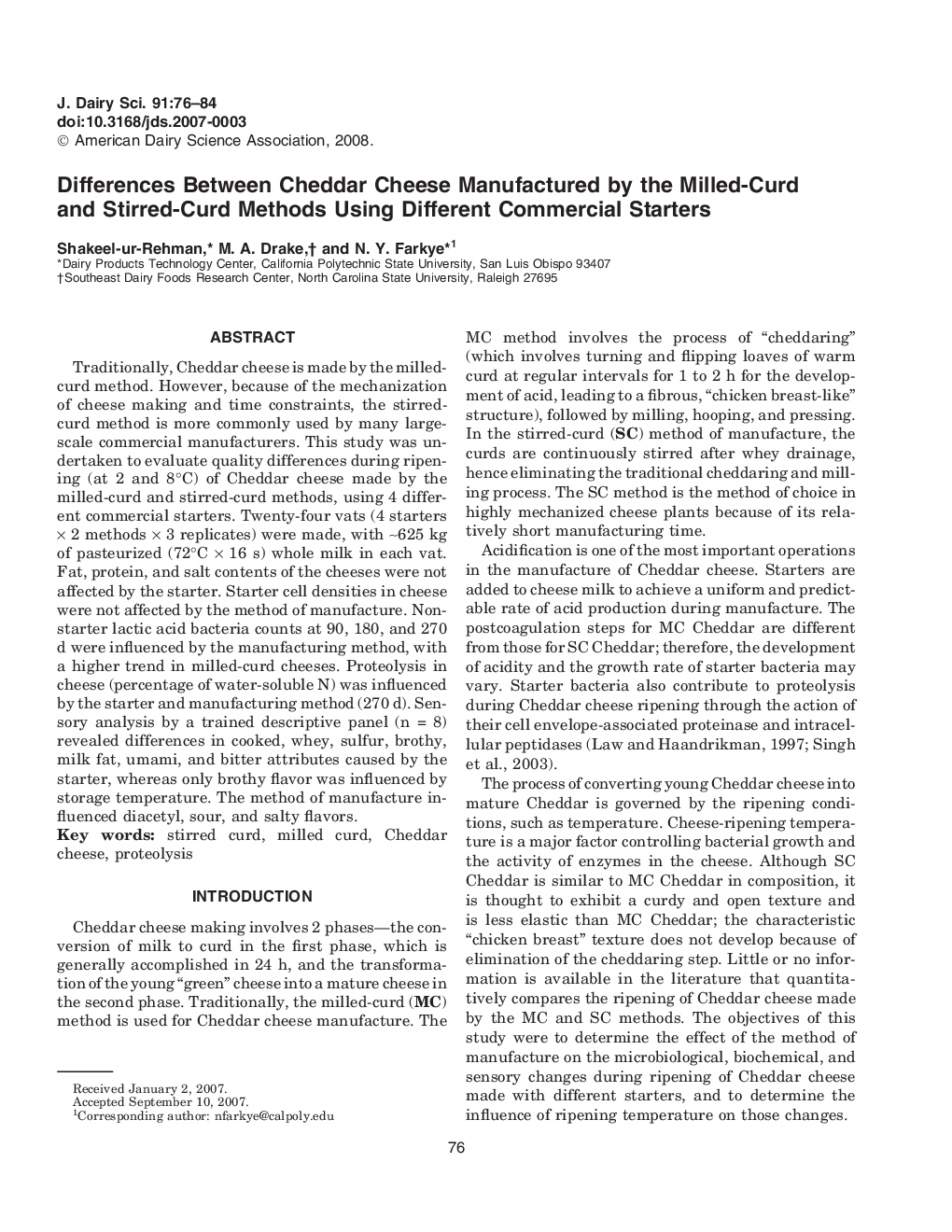| کد مقاله | کد نشریه | سال انتشار | مقاله انگلیسی | نسخه تمام متن |
|---|---|---|---|---|
| 2439560 | 1108100 | 2008 | 9 صفحه PDF | دانلود رایگان |
عنوان انگلیسی مقاله ISI
Differences Between Cheddar Cheese Manufactured by the Milled-Curd and Stirred-Curd Methods Using Different Commercial Starters
دانلود مقاله + سفارش ترجمه
دانلود مقاله ISI انگلیسی
رایگان برای ایرانیان
موضوعات مرتبط
علوم زیستی و بیوفناوری
علوم کشاورزی و بیولوژیک
علوم دامی و جانورشناسی
پیش نمایش صفحه اول مقاله

چکیده انگلیسی
Traditionally, Cheddar cheese is made by the milled-curd method. However, because of the mechanization of cheese making and time constraints, the stirred-curd method is more commonly used by many large-scale commercial manufacturers. This study was undertaken to evaluate quality differences during ripening (at 2 and 8°C) of Cheddar cheese made by the milled-curd and stirred-curd methods, using 4 different commercial starters. Twenty-four vats (4 starters Ã 2 methods Ã 3 replicates) were made, with â¼625 kg of pasteurized (72°C Ã 16 s) whole milk in each vat. Fat, protein, and salt contents of the cheeses were not affected by the starter. Starter cell densities in cheese were not affected by the method of manufacture. Nonstarter lactic acid bacteria counts at 90, 180, and 270 d were influenced by the manufacturing method, with a higher trend in milled-curd cheeses. Proteolysis in cheese (percentage of water-soluble N) was influenced by the starter and manufacturing method (270 d). Sensory analysis by a trained descriptive panel (n = 8) revealed differences in cooked, whey, sulfur, brothy, milk fat, umami, and bitter attributes caused by the starter, whereas only brothy flavor was influenced by storage temperature. The method of manufacture influenced diacetyl, sour, and salty flavors.
ناشر
Database: Elsevier - ScienceDirect (ساینس دایرکت)
Journal: Journal of Dairy Science - Volume 91, Issue 1, January 2008, Pages 76-84
Journal: Journal of Dairy Science - Volume 91, Issue 1, January 2008, Pages 76-84
نویسندگان
Shakeel-ur-Rehman Shakeel-ur-Rehman, M.A. Drake, N.Y. Farkye,